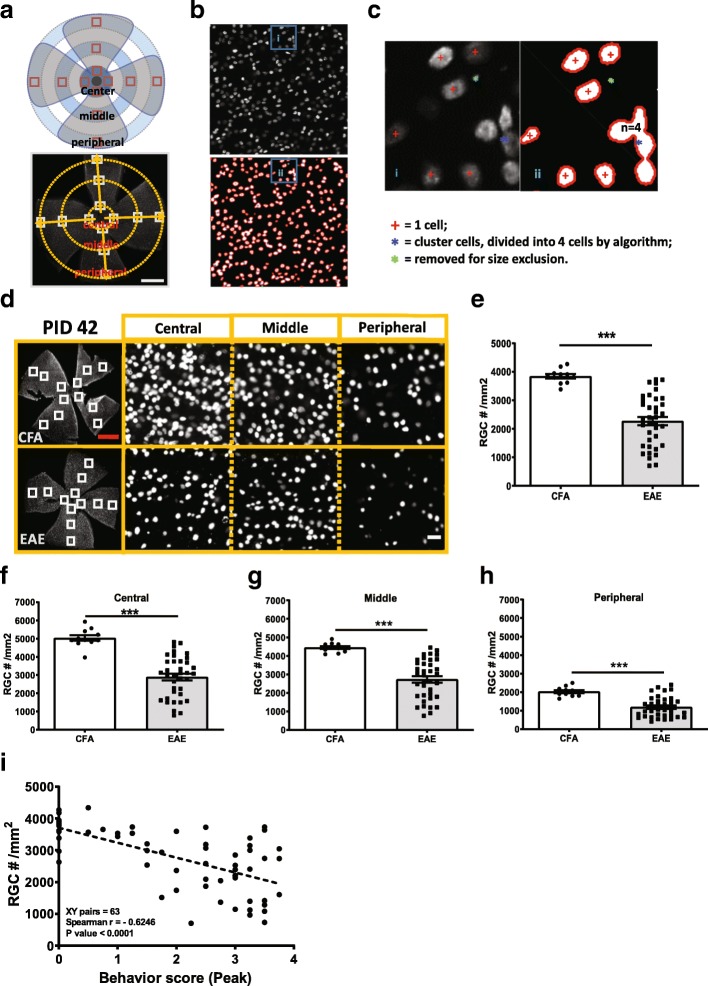Fig. 1.
EAE mice had significant RGC loss at late stage but not early stage (peak) of disease. Mouse RGCs were labeled with anti-mouse Brn3a antibody in whole flat mount retina and RGC number was quantified using a MATLAB based semi-automatic algorithm. a Schematic of segments selection in whole flat mount retina stained with anti-mouse Brn3a antibody. Scale bar = 1 mm. b Cells in selected retinal segment was identified using semi-automatic algorithm. Cell boundaries were identified by red lines, and single cells identified by red “+” symbol; any remaining noise was eliminated by size exclusion, as indicated by green dots. Clusters of overlapping cells, identified by blue dots, were segmented based on the rounded area of the cluster relative to the average cell size. c Details of cell identification in Fig. S1c as indicated in boxes. d Brn3a staining at PID42. e-h Quantification of RGC number at PID42 (e), and subregion of whole retina, central (f), middle (g) and peripheral (h). i Correlation of RGC numbers and peak behavior score (Spearman r = − 0.6246, p < 0.001). Error bars represent standard error. Significance of mean differences was compared by two-tailed, unpaired Student’s t-test with P < 0.05 considered as significant. *** P ≤ 0.001. N.S. = no significant difference. Correlation anylasis was performed by Spearman r test. Red scale bar =1 mm. White scale bar =20 μm

